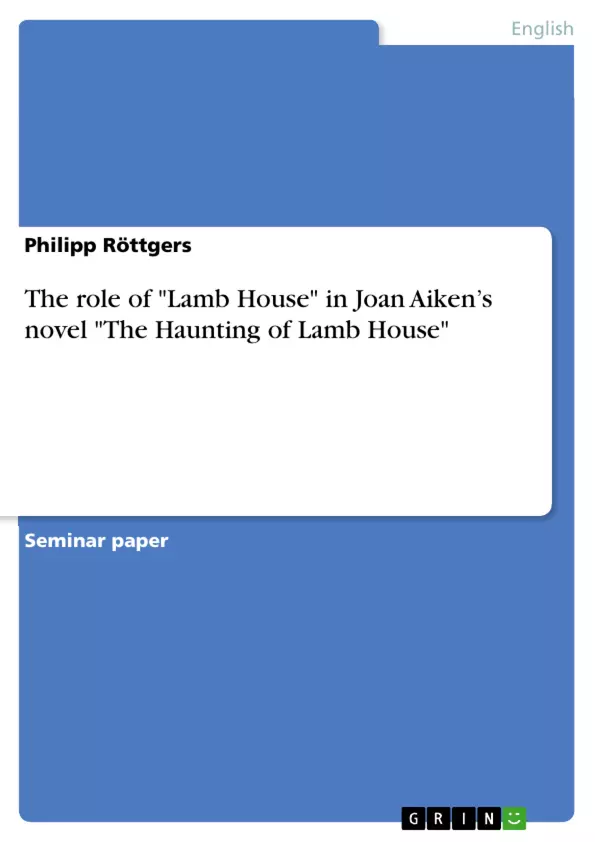Haunted houses have become an own genre in literature. “The Haunting of Lamb House” seems a classical ‘haunted house’-story. It is a novel, written in 1991 by British author Joan Aiken, and it deals with the real-existing Lamb House in Rye, Sussex.
First, I will give a short overview over the real existing Lamb House in Rye (in the neighbourhood of Aiken’s birthplace) and some information about its inhabitants, which might be important for the story. In the analysis I will give a definition of the ‘haunted house’ and the whole genre that deals with haunted houses. Then I will go through the story of the novel and point out the impact Lamb House has on its inhabitants and the way the house is presented. Afterwards, I will have a look at the historic background of the story Aiken has written. In the conclusion, I will also try to find out if Lamb House (in the story) represents a haunted house and if the novel fulfils the criteria for being a novel which fits into the genre of the ‘haunted house’.
Inhaltsverzeichnis (Table of Contents)
- Introduction
- Lamb House and its inhabitants
- "The Haunting of Lamb House"
- The genre of the "Haunted House"
- The role of the house in the story and its influence on its inhabitants
- The historic background of the story...
- Conclusion....
Zielsetzung und Themenschwerpunkte (Objectives and Key Themes)
This paper aims to analyze the role of Lamb House in Joan Aiken's novel "The Haunting of Lamb House." The analysis focuses on how the house influences the story and its inhabitants, particularly considering its history and literary associations. The paper also examines the novel's place within the genre of "haunted house" stories.
- The significance of Lamb House in the novel and its impact on the characters
- The genre of "haunted house" stories and its application to "The Haunting of Lamb House"
- The historical context of the novel and its connection to the real Lamb House
- The literary legacy of Lamb House as a residence for authors like Henry James and E.F. Benson
- The relationship between fact and fiction in the novel
Zusammenfassung der Kapitel (Chapter Summaries)
The introduction provides a brief overview of the novel "The Haunting of Lamb House" and its setting, Lamb House in Rye, Sussex. The chapter also introduces the author, Joan Aiken, and her background in writing.
The second chapter explores the history of Lamb House and its inhabitants, focusing on the significance of Henry James and E.F. Benson as residents. It discusses the house's history from its construction in 1723 to its present-day ownership by the National Trust.
The third chapter delves into the novel "The Haunting of Lamb House" itself. It begins by defining the genre of "haunted house" stories and then analyzes the role of Lamb House in the narrative and its influence on the characters. The chapter also examines the historical background of the story.
Schlüsselwörter (Keywords)
This paper explores the key concepts of "haunted house" literature, the relationship between fiction and fact, and the impact of historical context on narrative. It also focuses on the literary legacies of Henry James and E.F. Benson, as well as the significance of Lamb House as a site of literary history.
- Quote paper
- Philipp Röttgers (Author), 2015, The role of "Lamb House" in Joan Aiken’s novel "The Haunting of Lamb House", Munich, GRIN Verlag, https://www.hausarbeiten.de/document/1189412


